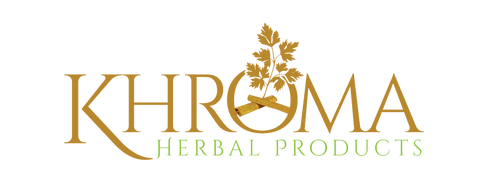When it comes to herbs, there are many different methods of delivery.
You’ve probably used capsules, bought tablets, made oils, prepared teas, and occasionally settled for powders.
Despite the various options, tinctures and extracts are most popular – not only because they are readily available, but also because they’re easy to prepare and provide a favorable potency.
Today we want to discuss the difference between the two as well as their important similarities to help you choose what’s best for you.
What’s the Difference Between a Tincture and an Extract?
First, let me point out that the terms “tincture” and “extract” are largely interchangeable and used to refer to the same thing by the majority of the population.
But is there a difference between the two formulations?
While this may seem like a trivial and silly question, the answer is worth having.
You may be making extracts at home then you realize the tinctures you bought from the store are working far better than your homemade recipes.
Unless you understand the difference, you may be gambling with the therapeutic outcomes you want to achieve with your herbs.
Essentially, all tinctures are extracts, but not all extracts are tinctures. This means that tinctures are subsets of extracts.
Let’s discuss this further:
Fluid Extracts
Extracts, also called fluid extracts or liquid extracts, are herbal formulations that are similar in form to tinctures but differ primarily in concentration.
Usually, liquid extracts are more concentrated than tinctures.
During the preparation of fluid extracts, typically one-part fluid is added to one-part herb to make a formulation that is highly concentrated. So basically, the ratio is 1:1.
Fluid extracts are concentrated so much so that there’s visible sediment at the bottom of the jar.
That’s why you’re always advised to shake extracts well before use to ensure that the herb mixes well with the liquid.
Extracts are usually prepared using non-alcoholic solvents such as vinegar, glycerin, or water.
Occasionally, alcohol may be used.
Extracts are also preferably made from dried herb materials.
Pros
-
Extracts have significantly longer shelf life
-
Extracts can be more potent than tinctures
-
They are easy to store
Cons
-
The preparation process can be tedious
-
The long process of preparation can strip off essential oils from the herbs
- You constantly have to shake well before use to re-mix the herb with the liquid.
Tinctures
Tinctures, on the other hand, are usually not as concentrated as fluid extracts - though some can be.
The concentration of a tincture varies depending on the herb type used and your preference (if making it yourself). For instance, you can decide that for every one-part herb you want three-parts fluid.
There are also certain herbs that are best mixed with liquid in the ratio of 6:1 or 8:1 where a lot more solvent is used to make the formulation.
For this reason, tinctures are usually less potent than fluid extracts, and you’ll need to use more tincture to achieve the same effect as a fluid extract.
Most tinctures are made using alcohol as the solvent. Though, sometimes other solvents like glycerin can be used.
Another thing that sets tinctures apart is that they are preferably prepared using fresh plant material obtained directly from the field.
Pros
-
They are easy to make at home
-
They have a relatively longer shelf life compared to whole herbs
-
They’re easily assimilated into the body
-
They’re easy to store
- They are convenient to use
Cons
- You might need a larger amount of tincture to achieve the same benefits you’d get in a smaller amount of extract. There are exceptions, so you need to read the label carefully.
What About Standardized Extracts?
Standardized extracts, unlike basic fluid extracts, are herbal extracts in which one or more of the active ingredients is made in a fixed amount expressed as a percentage.
This model has been copied from the pharmaceutical industry where a specific amount of a drug is made available in all the batches sold.
The concept of standardized extracts is that they’re more precise, ensuring a certain potency and efficacy.
One major downside of standardized extracts is that one ingredient is often favored over another which may be equally important.
As a result, standardization may distort the natural effectiveness of herbal extracts, which often contain compounds in certain ratios that work together (a process known as synergy) to accomplish a benefit.
However, there is another form of standardization that doesn’t overlook other ingredients.
In this form of delivery, the herbal extracts are marketed using labels with the most popular ingredient yet all the ingredients in the formulation are added in the same proportion.
Tincture Vs Extract – Which Is Better?
That largely depends on personal preference.
The severity of the condition you are managing may also determine the option you settle on. For instance, if you have an acute disease, more potent extracts may be better suited for you.
On the other hand, if you’re relatively healthy and just want herbal support for preventive use, then tinctures may be best.
But remember, the words “tincture” and “extract” are largely interchangeable.
So it’s very important to contact your supplier and ask questions about the potency and the process of extraction for the products you are purchasing.

